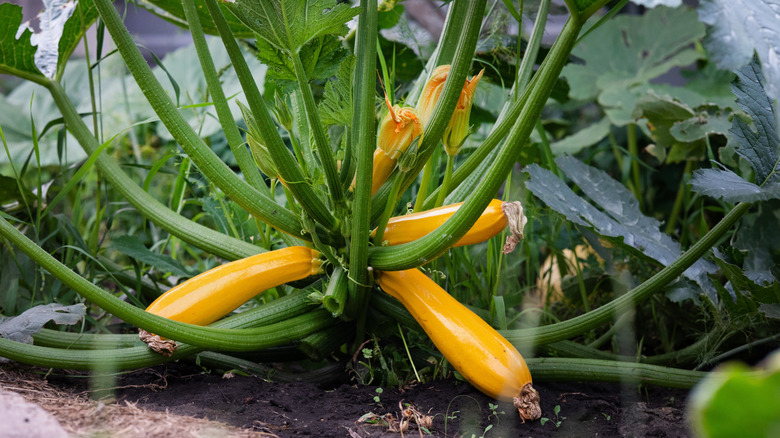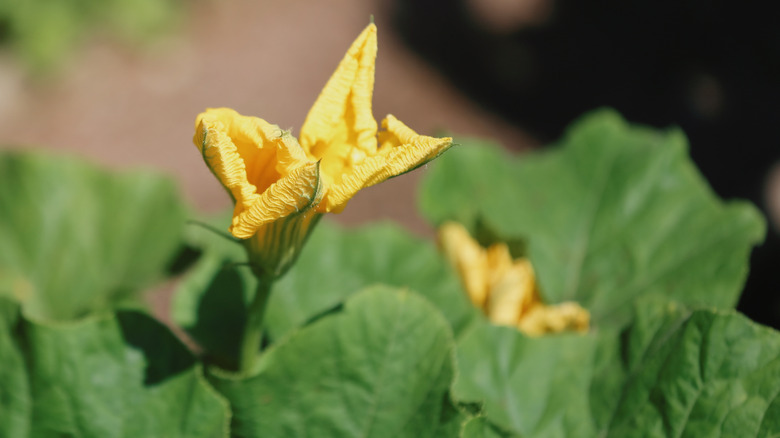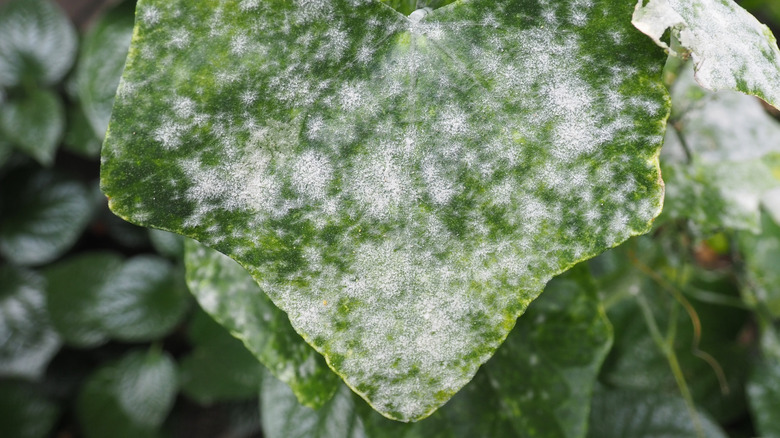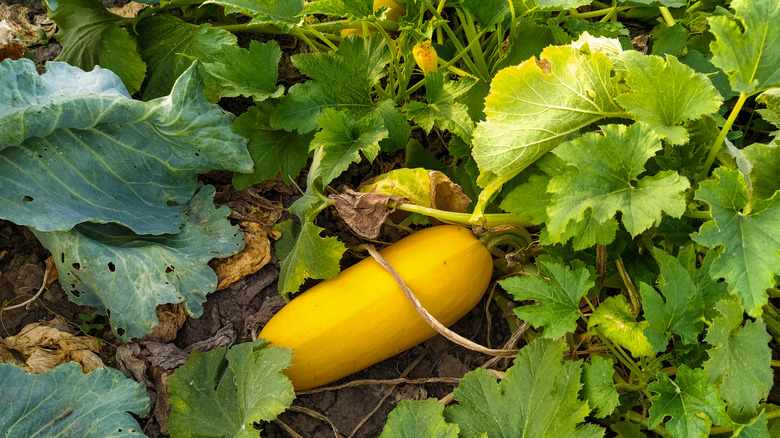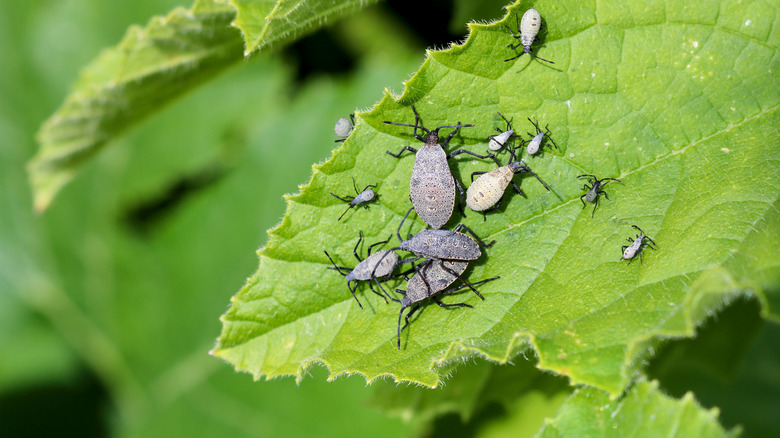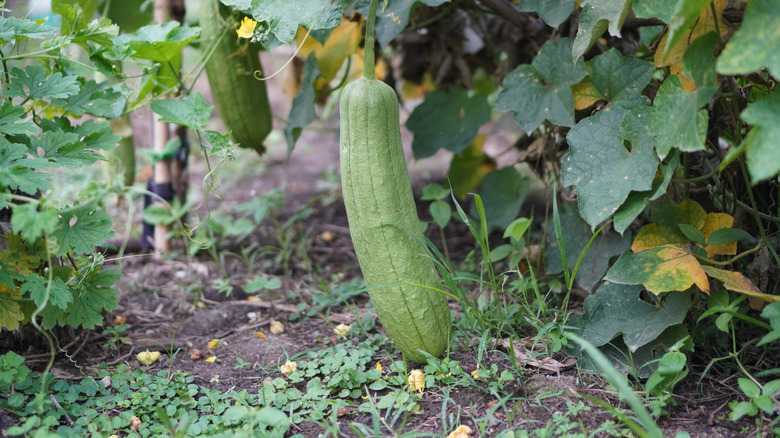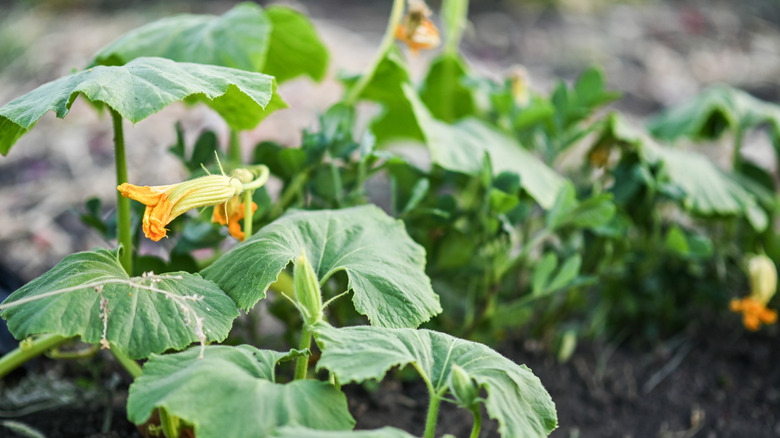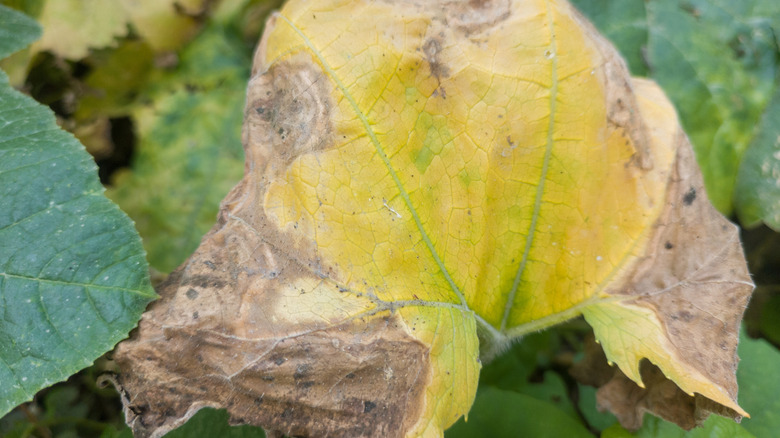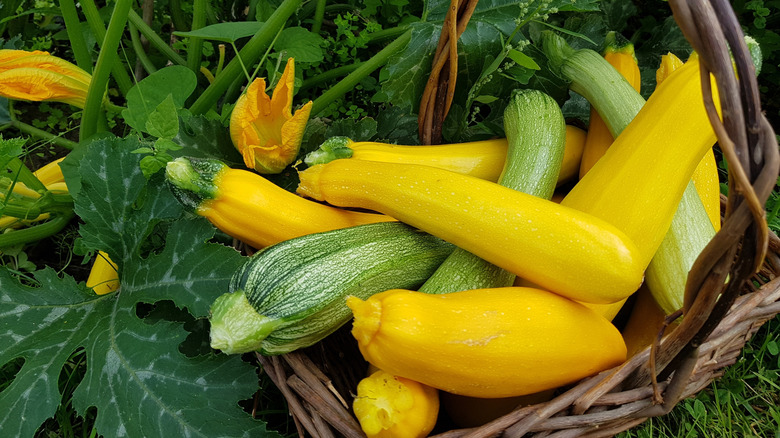8 Clear Signs The Squash Plants In Your Garden Need To Be Pruned
We may receive a commission on purchases made from links.
Squash comes in many varieties, including zucchini, butternut squash, and summer squash, among others. If you're just getting started with your garden, patty pan squash (Curcurbita pepo) is a type of summer squash that's best for beginners to grow. Squash plants (Cucurbita) are part of the gourd family (Cucurbitaceae). They grow best in the summertime, with some forming long vines in your garden or yard. Because the plant tends to vine and grow vertically, you may not recognize when your squash needs proper pruning. However, there are clear signs when the squash plants in your garden need to be pruned, such as when they show signs of mildew, overcrowding of the plant, discoloration on the leaves, or when the plant is touching the ground.
Regular pruning encourages more growth from your squash, and getting rid of any of the non-budding leaves helps to push the ones that are growing to become more fruitful. It plays an essential part in contributing to the health of your plant. But to effectively prune squash plants for a bigger, healthier harvest, you need to know the right time to do it. below you'll find eight signs that indicate that your squash plants need pruning.
Once the first flowers on your plant bloom
One of the best times to prune is when your squash plants bloom their first flowers. After you transplant them into your garden or yard, watch for when they sprout blooms in a few weeks. That's your first clear sign. You can then assess the growth of the leaves and prune the ones that need it. It's helpful to have a good pair of gloves like the HANDLANDY Women Safety Gardening Gloves, and some pruning shears, like these gonicc 8" Professional Premium Titanium Bypass Pruning Shears, to make the work easier.
Mildew on your squash plants
A white, powdery substance on your squash plant's leaves is an indication of mildew. The particular kind that attacks your squash is known as Erysiphe cichoracearum. It's easy to see and a clear sign that you need to prune your plant to prevent the disease from spreading. Prune by cutting off the leaves that show signs of infection. Be sure not to touch them, as this can inadvertently spread the disease to other leaves. Additionally, do not compost those leaves; instead, destroy them completely by disposing in the trash or burning them.
Overcrowded plants
Excess foliage is another indicator that it's time to prune. If stems and leaves are branching out of your raised flower bed, or you see them crisscrossing one another, that shows overcrowding. Overcrowded plants compete for the nutrients in the soil, which can reduce yield. It's essential to prune and ensure that there is sufficient space (2 to 4 feet) between your squash plants. Your ideal plant should still have a balanced amount of leaves, and ensure you don't prune the flowers, since they are necessary for pollination and fruit growth.
Pests or leaf discoloration
If you notice yellowish or green spots on your leaves, you may be dealing with a pest infestation. Squash bugs (Anasa tristis) suck away at your plant's sap. These bugs cluster underneath your leaves, causing discoloration. Grayish or tan-colored spots may indicate other issues, such as downy mildew. It is a type of fungus that can spread rapidly, so prune as soon as you notice any concerning leaf color changes to prevent it from getting out of hand. You can then protect your squash plants from pests with a genius toilet paper roll hack.
Leaves touching the ground
If you notice that your vines' growth has led to leaves growing downward, this is a clear indication that it's time for pruning. When the leaves or stems touch the ground or soil, they provide a potential living space for pests or critters, which can also cause severe damage to your plant. Your squash can also become an excellent food source and attract unwanted visitors to your yard or garden. Therefore, removing those leaves from the ground is crucial to maintaining your plant's health and vitality.
Vines that aren't producing flowers
You may notice once your squash is growing that some vines don't have any blooms or flowers. You can prune these by locating the vines that aren't on the primary stem to trim off. It may help to trim back areas you don't want to encourage growth, say areas close to garden structures. Just keep in mind that if you have vines attached to your primary stem that are not producing, you should leave them — that stem is vital for the structure and growth of your plant.
Dead or dying leaves
Another excellent sign for pruning is the presence of dead or dying leaves on your squash plant. These leaves are often brown or yellow. They could be caused by age or stress, and should be pruned as soon as possible. Pruning these leaves is a simple way to free up space and encourage the production of more fruit and flowers in your healthy plants. It also directs nutrients to the remainder of the plant, so your fruits can grow more easily (and get bigger!).
End of the harvest season
Finally, one last clear sign that the squash plants in your garden need pruning is that it's simply the end of the harvest season. The variety of squash you grow will determine when the end of the season is. The best way to determine when it's time for harvesting is by pushing your fingernail into your fruit, and if you can't puncture it, then it's ready to pick, as well as time for some pruning. The harvest season for winter squash typically occurs in September or October.
